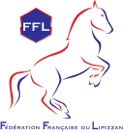

the lipizzan horse


The Lipizzaner is a race of horses closely associated with the Spanish Riding School in Vienna, Austria, where the immaculate white magnificent stallions develop tunes of "High School" obtained through an academic training in accordance with the teaching of the ancient masters of French horsemanship Lipizzan, and which are, in practice, controlled amplification of natural movements of the horse.
We can trace the origin of the Lipizzaner's ancestors in the 7th century when the «Barb» was imported into Spain by the Moors and crossed with native Spanish horses. This was the beginning of the Andalusian horse race and other Iberians.
In the late 16th century, when the Austrian Hapsburg family occupies both the throne of the Holy Roman Empire and the throne of Spain, the armed forces and riding schools in Central Europe wish to have horses that would be strong and agile.
Thus, in 1562, Emperor Maximilian II introduced the Spanish Andalusian horse in Austria and founded the Imperial Stud Kladrub Bohemia. In 1580, his brother, Archduke Charles II established a similar stud in Lipizza on the Kras Plateau (or Karst) located in what is now Slovenia, which belonged at that time in the Austrian Empire, and whose breed derives its name.
Besides the qualities they show in dressage, Lipizzaners are distinguished also by their excellent character and dress, berry or black at birth, gradually brightened to become a gray so clear that it becomes practically white, between 6 and 10 years.
The Lipizzan was endangered during the Second World War, but the intervention of General George S. Patton helped save 250 horses, ensuring the preservation of the breed's long history.


You are here : Welcome > History
Welcome | Contact us | Sitemap
